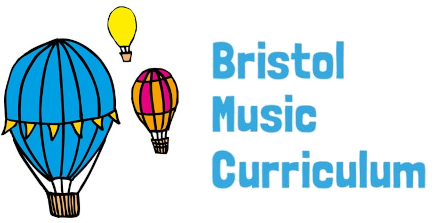Key Learning Objectives: To create a soundscape with an identifiable structure. Starter activity: Introduction to the concept of structure, demonstrating its importance through the scenario of a telephone call. Main activity: Create a whole class soundscape of a hot air balloon taking off. Each group to be designated one section of the soundscape structure. Plenary: Performance opportunity, groups […]
Tag: Composition
Year 3, Unit 1: Air – Lesson 1
Key Learning Objective: To explore and understand timbre. Additional Learning Objective: To contribute to creating a soundscape of a hot air balloon preparing to take flight and lifting off the ground. Starter activity: Explore the Bristol Balloon Fiesta, listen to Lin Marsh’s ‘Hot Air Balloon Song’, learning part one of the refrain. Main activity: Create a whole […]
Year 2, Unit 2: Chronology – Lesson 6
Key Learning Objectives: To notate sounds using a graphic score. To compose and perform a piece of music using sampled sound. To compose and perform a motif which suggests a looming effect. Starter activity: Listening and response exercise based on the work ‘Loomings’ by Three Cane Whale. Introduction to the concept of minimal music as […]
Year 2, Unit 1: Water – Lesson 3
Key Learning Objective: To understand the difference between pulse and rhythm and to compose a song to a given rhythm. Additional Learning Objectives: To internalise a short simple melody and create lyrics to fit a given rhythm pattern. Starter activity: Listening exercise, play the theme music from ‘Pirates of the Caribbean’, and share words about the sea/pirates/atmosphere […]
Year 2, Unit 1: Water – Lesson 2
Key Learning Objective: To explore the correlation between pitch and high/low notation. Additional Learning Objectives: To create my own symbols to represent sounds. To define music vocabulary –pitch (HIGH and LOW) and identify the pitch when heard. To keep a beat/respond to a beat. Starter activity: Introduce the vocabulary of pitch (high/middle/low) demonstrating these pitches using […]
Year 2, Unit 1: Water – Lesson 1
Key Learning Objective: To read and perform a four bar notated rhythm. Additional Learning Objectives: To know how to handle and make sounds on several instruments. To choose sounds to represent ideas e.g.: calm stormy sea. To play quietly or loudly to represent a calm or stormy ocean. Starter activity: Full-body warm up, mimicking big wave/dainty […]
Year 1, Unit 2: Animal Rhythms – Lesson 6
Key Learning Objective: To read and perform a four bar notated rhythm. Starter activity: Pupils select favourite warm up song to focus their voices, bodies and brains. Main activity: Using a selection of untuned percussion instruments, children chant the animal rhythms and then play on their instruments, reinforcing a four-bar rhythm. Plenary: Revisit ‘Zebra Crossing’, incorporating a game […]
Year 1, Unit 2: Animal Rhythms – Lesson 5
Key Learning Objectives: To compose and perform a four beat rhythm. To use this as a rhythmic ostinato. Starter activity: Revision of the song, ‘Tony Chestnut.’ Main activity: Revision of the rhythm picture cards, followed by revision of the term ‘ostinato’ and the creation of a four-bar rhythm using the animal pictures. Plenary: Revisit ‘This Train is […]
Year 1, Unit 2: Animal Rhythms – Lesson 3
Key Learning Objectives: To identify the difference between pulse and rhythm. To recognise, play and compose simple rhythm patterns with the aid of animal note value cards. Starter activity: Listening and response exercise using the chant ‘H.E.L.L.O.’ Main activity: Creation of an individual rhythmic pattern, based on syllables found in the words ‘frog’ and ‘monkey’. Plenary: Listening […]
